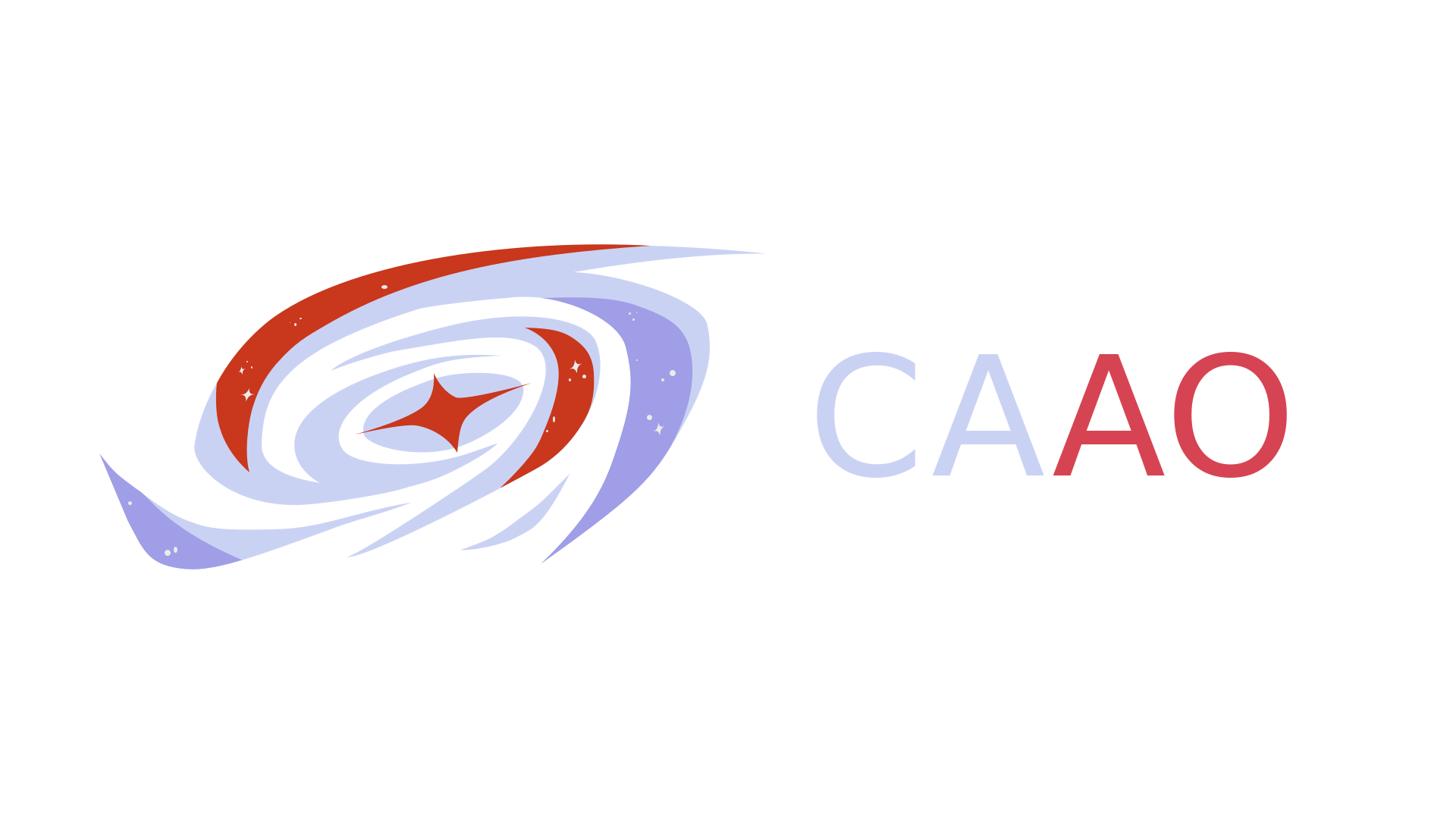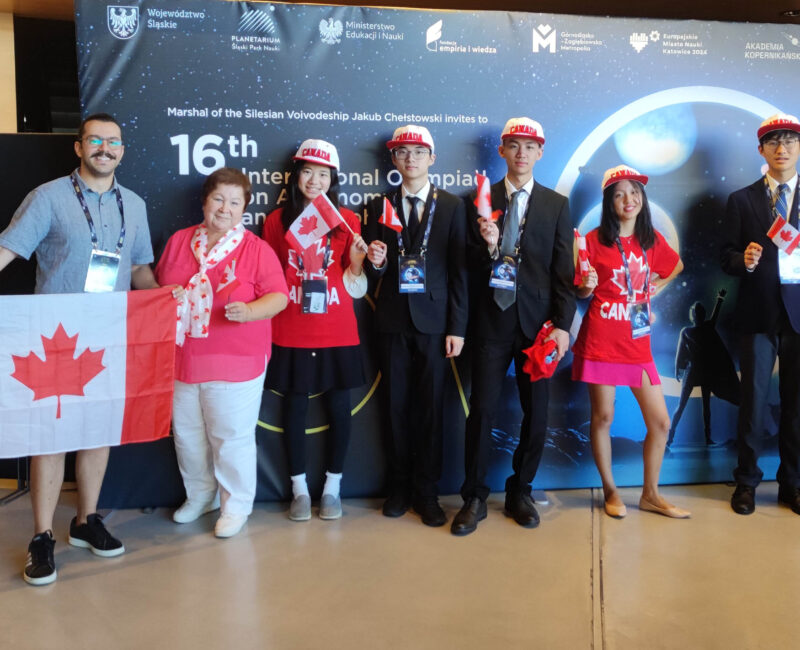What's New
CAAO Junior 2025
The CAAO Jr. is now available to download.
Books, online resources, and calculators are allowed.
Collaboration with others, posting on forums, or paying for external help is strictly prohibited.
A confirmation email will be sent out once we receive the contest. If you don't receive a confirmation within a day after submission, please let us know.
CAAO Jr. 2025
The Canadian Astronomy and Astrophysics Olympiads Junior (CAAO Jr.) 2025 are scheduled to commence on Saturday, May 24 at 12:00 PM ET (9:00 AM PT). The contest will be posted on this website at that time.
All participants are required to register for the competition. A registration fee of $20 applies. Please e-transfer the registration fee to payment@caao.ca.
Students can register by sending an email to info@caao.ca with the following information:
- First and Last Name
- Grade
- School Name, City, Province
- Date of Birth
- Citizenship Status
- Email for Contact
To prove that you’ve made the payment, take a screenshot and write in the e-transfer message: This is the CAAO payment for [student name]. Attach the payment proof in the registration email.
Students have time to register until the end of the competition, which is on Saturday, May 31, at 12:00 PM ET (9:00 AM PT).
Participants will have one week to complete the contest and submit their handwritten solutions to info@caao.ca. We would like to remind participants that typed-up solutions will NOT be accepted.
The deadline for the submission of CAAO Jr. solutions is at 12:00 PM ET (9:00 AM PT) on Saturday, May 31. We encourage all interested students to take part in this Olympiad competition and showcase their knowledge in astronomy and astrophysics. The Canadian IOAA Jr. team will be chosen from the top students from the CAAO Jr. This year, the IOAA Jr. will be held in Piatra-Neamt, Romania from October 18 to 25, 2025.
Students from any country can participate in the CAAO Jr. However, only Canadian citizens or permanent residents will have the opportunity to represent Canada at the international Olympiads.
We wish all participants the best of luck in the CAAO Jr.
2025 Astronomy Contest Dates
This year, we’ve made some changes to the 2025 competition dates and rules. Please see the description under each competition and the contest dates for the current academic year.
CAAO Senior
The format of the CAAO Senior is similar to that of last year. We will make some adjustments to the question types.
Date: March 9–16, 2025
CAAO Junior
We will introduce a new Olympiad competition for students aged 15 and under. This is the team selection exam for the IOAA Jr. competition.
Date: May 24–31, 2025
CAAO Senior Camp
The training camp is for students who have performed well on the CAAO Senior. We have moved the date of the camp to May 2025 as well. Unlike last year, the IOAA team will be formed based on students’ CAAO and camp exam results.
Date: May 30–June 1, 2025. This date is subject to change depending on the location availability.
2024 Team Canada IOAA Jr. Results
Congratulations to Team Canada on its outstanding performance at the third IOAA Jr held in Kathmandu, Nepal. Our team returned with a gold medal and an honourable mention.
This is Team Canada's first participation in the IOAA Jr. The remarkable results of our participants will pave the way for new students to push the boundaries of their aspirations.
2024 Team Canada IOAA Results
Congratulations to Team Canada on its outstanding performance at the 17th IOAA held in Rio de Janeiro, Brazil. Our team returned with gold and bronze medals.
Their collective effort has truly showcased the talent Canada brings to the international stage, and each one of them deserves our admiration and gratitude.
IOAA Team Canada 2024
Every year, the most important criteria for the IOAA Team Canada selection is the CAAO. In the case when several students show very close results at the CAAO, the preference is given to students in younger grades to recognize their effort and allow more students to participate in Olympiad competitions. Based on this year’s CAAO results, we are delighted to invite the following students to the IOAA Team Canada 2024:
- Olivia Kay
- Jarmin Weng
- Zander Li
- Hongyi Huang
- Parth Sheth
2023 Team Canada IOAA Results
We are thrilled to announce Team Canada's returned from the 16th IOAA held in Chorzów, Poland, decorated with three medals: gold, silver, and bronze.
Their collective effort has truly showcased the talent Canada brings to the international stage, and each one of them deserves our admiration and gratitude.
New Partners and Sponsors
We would like to express our sincere appreciation to McMaster University's Planetarium for their generous support. Your support is essential to help us bringing astronomy and astrophysics education to more students across Canada.
New Partners and Sponsors
We would like to express our sincere appreciation to Perimeter Institute for their generous support. Your support is essential to help us bringing astronomy and astrophysics education to more students across Canada.
Spiral Galaxy NGC 2841
A mere 46 million light-years distant, spiral galaxy NGC 2841 can be found in the northern constellation of Ursa Major. This deep view of the gorgeous island universe was captured during 32 clear nights in November, December 2021 and January 2022. It shows off a striking yellow nucleus, galactic disk, and faint outer regions. Dust lanes, small star-forming regions, and young star clusters are embedded in the patchy, tightly wound spiral arms. In contrast, many other spirals exhibit grand, sweeping arms with large star-forming regions. NGC 2841 has a diameter of over 150,000 light-years, even larger than our own Milky Way. X-ray images suggest that resulting winds and stellar explosions create plumes of hot gas extending into a halo around NGC 2841. via NASA https://ift.tt/mSNa6DC
Dueling Bands of the Night
What are these two bands in the sky? The more commonly seen band is the one on the right and is the central band of our Milky Way galaxy. Our Sun orbits in the disk of this spiral galaxy, so that from inside, this disk appears as a band of comparable brightness all the way around the sky. The Milky Way band can also be seen all year -- if out away from city lights. The less commonly seem band, on the left, is zodiacal light -- sunlight reflected from dust orbiting the Sun in our Solar System. Zodiacal light is brightest near the Sun and so is best seen just before sunrise or just after sunset. On some evenings in the north, particularly during the months of March and April, this ribbon of zodiacal light can appear quite prominent after sunset. It was determined only this century that zodiacal dust was mostly expelled by comets that have passed near Jupiter. Only on certain times of the year will the two bands be seen side by side, in parts of the sky, like this. The featured image, including the Andromeda galaxy and a meteor, was captured in late January over a frozen lake in Kanding, Sichuan, China. via NASA https://ift.tt/cryfIHk





